Supporting creativity and eliminating digital distractions
Staying focused on the passions at hand when your phone wants it all
I am a person who creates.
That is the description of an identity which I have possessed for at least two-and-a-half decades now. It is something which has been a matter of fact all this time; yet it is also something that I only properly acknowledged to myself as an adult.
The desire to create something in the places where there was previously nothing — this feeling has been strong throughout my life. And even the word strong is not worthy to convey something that is more than a compulsion or a want. Words like fundamental and innate come closer to mind.
Perhaps you, reader, identify with this concept directly. Perhaps it is indirectly via a specific activity or skill you’ve always performed. It could be that you play an instrument, or draw, or read books tirelessly. Maybe you do sports or play chess. Whatever your angle may be, the responsibilities of adulthood’s onset will inevitably encroach upon that activity you love. The luckiest and most privileged of us will manage to keep going, and the rest may find the time and opportunity later in life to fall back in love once again.
Your attention please
In the world of creative pursuits, there really is no better time than right now. When inspiration strikes, one must act, or it will be lost. Distraction and procrastination exist as hindrances to the creative process. These methods of inaction and delay provide convenient places to hide ourselves when commitment is required, and they allow us to absolve ourselves of both the weight of success and the fear of failure.
How destructive is it to us creatively, then?
How destructive is it that we contend daily with a suite of digital products which actively distract us and promote procrastination?
My answer: potentially total.
I believe these products are capable of totally destroying our creative outputs and desires simply by robbing us of the most precious resource of all — time.
Without time…
We can never reflect.
We can never learn.
We can never create.
And we can never heal.
A strategic change, or many such
In my last post, I wrote about the challenges I’ve faced with social media’s attempts at monopolising my attention. A theme is forming, but not from trend or for clicks. I’m writing all this for a reason — that we all deserve space for ourselves to love doing something. Whether it’s something from long ago that we never stopped; or something new we discovered only today.
There are many digital products out there that would try to use our time in a way that leaves nothing for us. We know they are built to fill every bit of empty space in order to satisfy and maximise their profit mandates. If we allow it to happen (or continue), we will only ever be observers, chronically online, getting a minute-to-minute faceful from a firehose of negativity and short form “content”.
It’s time to find new ways to live in our world — the real, tactile, visible, breathable, musical, paintable, poetic one. General purpose mobile computing has given us a lot, but I think taking a look more toward simpler, single-purpose devices might give us an edge over being so distracted. And the procrastination part? Maybe if we eliminate some of the easy hiding places, we’ll get a proper chance to challenge ourselves.
These are some of the strategies I use to fight back and reclaim my time from all those time-wasting digital products. It’s all a work-in-progress, but I think it’s worth sharing.
The Strategies
Everyday camera
The one type of object which I always have with me — a camera. Sometimes I use more advanced models, but I mostly make use of a half frame film camera for my daily recordings of life.
I still use the smartphone camera a little for quick things I’ll fire off to friends directly, but long gone are the days of trying to take a really cool photo to instantly upload to my story with a location tag. I now also prefer to record moments with friends or make visual notes using a tool that won’t take me out of the moment.
Even for the small everyday things, the nature of film adds an extra element — waiting. It’s simply not possible to post immediately. I just take the photo and go on about my day; or return to being engaged with the people around me. Posting or sharing a personal photo becomes something that I must purposefully sit down or set out to do. I won’t be pulled away from life to bury my nose in my phone.
Books
e-Readers are pretty handy, but they’re an extra device to carry around. There was a period of time that I made use of the Kindle app on iPhone and iPad, though. It seemed fairly logical given I was traveling regularly with limited luggage and many other things like cameras that needed to be inspected during security screenings.
It seems logical right up until you try to read something. You’ll settle in to read, excited to be engrossed in literature. Perhaps one paragraph in, a banner notification will fold down from the top of the screen. Swipe it away, try to stay focused. Another pops in, and you can barely get rid of it before another arrives. They just keep coming. If it’s not a DM or a Like, some company is using their app’s push notifications1 to send you clever marketing messages while you’re trying to engage with an artistic work. React to one single banner, and it’s over — they got you.2
Books never do anything like that. They can’t. It’s a bound stack of paper with words you can touch and stories you can feel. But how does it work?
Get real book, ✓.
Leave phone somewhere else on silent, ✓.
Read book, ???.
Actually, this might actually be really hard for you to do if you’re not already doing it. Some years ago, when I returned to reading more regularly, it felt like my brain could not focus on the words for very long without wandering away.
It took some doing, but I eventually retrained myself to read. Maybe it sounds a little ridiculous, but it’s a skill, and you need to keep it sharp. If you, today, are like I once was when I sat down to read, the benefits all lie ahead of you.
Train yourself up in the attentiveness required by reading, and you will possess the focus needed to teach yourself anything.
A regular watch
This is my everyday watch. It doesn’t do much but tell the time and date. It lights up when I press the Light button. There’s an alarm and a timer. It’s simple, and I guess it also resists water.
What’s the best thing about it? Easy. It can’t show me any notifications. It never asks for my attention by serving as a proxy for someone else. It doesn’t empower anyone to reach through the internet and vibrate a device attached to my body.3
I had an Apple Watch for years. I thought it was cool at first — I could track my steps, heart rate and get messages! However, eventually, its ability as a wearable to disrupt my daily flow began to outpace its other perceived values. I started wearing it only when I went to the gym. When I left NYC, I traded it back to Apple for a gift card.
Wearable computers were created to strengthen the connection between ourselves and (a) a specific apps ecosystem; and (b) the rest of the internet. If a desire exists within any of us to disconnect more and to focus on reading, writing, painting, drawing, playing music or any other creative activity, there is little chance that desire can blossom when the tones and haptics on our wrist remind us that our attention is wanted somewhere else.
Notebooks and writing pads

Be careful with this one. Once you’ve ditched your phone’s notes app and rediscovered pen and paper, you might fill your house with notebooks and writing pads. I won’t be to blame if you invest all of your money in wonderful, smooth, high-quality Japanese papers and pens.
No, paper doesn’t sync its contents to other devices. You need to care for your notebook; and by extension, your very thoughts. You must carry it with you and endeavour to be honest with its pages.
I have a writing pad dedicated to this blog where I write early drafts or snippets that I want to expound upon. Sitting down at a table with a warm beverage and the pad is not only cosy, but it deprives me of the digital distractions that come with using a computer or phone. I let the pen flow, and I just write until I feel on my own that I should stop and do something else.
The alarm clock
This is a really new one for me. After reading a post from Tuğba on as slow as possible, her idea for “analoguing” her life led to some discussion. I decided to try her advice about alarm clocks. A couple of weeks ago, I went on eBay and found something that suited my needs. Since it arrived, I’ve been enjoying its pleasing tick, tock, tick, tock on my bedside table.
Previously, I was using my phone’s alarm function. This is functional, but it also meant that the very last thing I would touch at night was my phone. And in the morning, the very first thing I would touch would be… my phone. Now the first and last object I interact with every day is my alarm clock.
It’s no revolutionary shift, yet something fundamental is changing. It’s quite encouraging to symbolically interact with something that fulfils a single purpose so well while looking good doing so. Clocks and time feature heavily in this list, and that is no coincidence. My new bedside clock is a daily reminder to treasure my time and use it on things that truly matter to me.
Concluding notes on the strategies
I had several more strategies noted that didn’t ultimately make the cut for this post. On reflection, I actually realised that my defensive posture against social media intrusion and digital distractions has lasted much longer than a few months or a year. I have been doing many small things over several years to hold on to my time. In retrospect, I can see that as I needed more time for creative pursuits, I became more judicious and selective. I am proud of the past me for opting out of some habits or digital products long before fully realising how important it would become.
Today, all these strategies and habits serve to support a better and more creative everyday. Yes, productivity and output are considerations, but they are not necessarily capitalist ones. It deals simply with fact that there are things I wish to create and there is a world that I wish to enjoy — without manufactured encumbrances or distractions.
I just believe that it is a good way to live. ■
Other writings to consider
A quick note about affiliates
There are no affiliate links on this page. I won’t make any money if you buy anything that I mentioned here.
If you enjoy this post, or otherwise take some inspiration away for some positive changes, why not buy me a coffee?
It’s not a recurring subscription; just a one-time nice gesture. Thanks for being here.
And if you aren’t subscribed to this blog+newsletter, that’s the most free way to support me.
Using push notifications to send marketing messages or run drip campaigns is a dick move. If an app does this to you, uninstall it.
I am aware of Focus or DND modes. These are helpful, but if you are a new or at-the-moment-less-disciplined reader, quick swapping to apps is going to be something that happens pretty easily even without notification banners.
The more I think about this one, the more aghast I am.


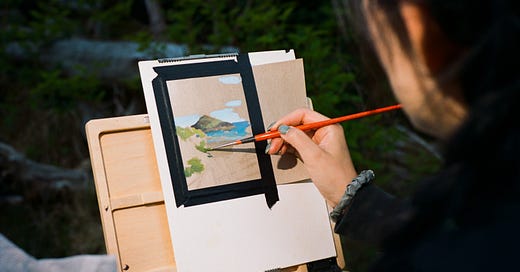




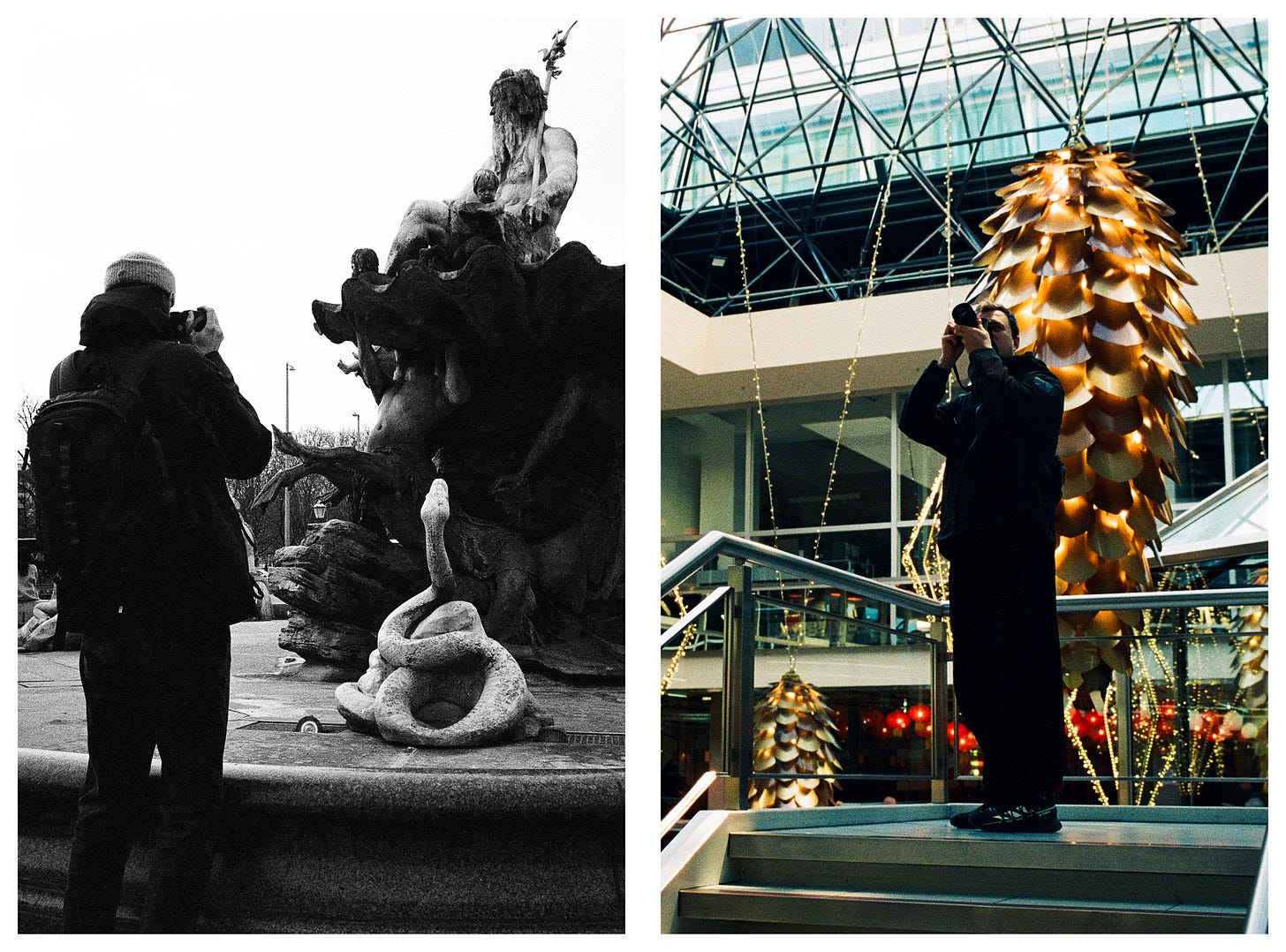
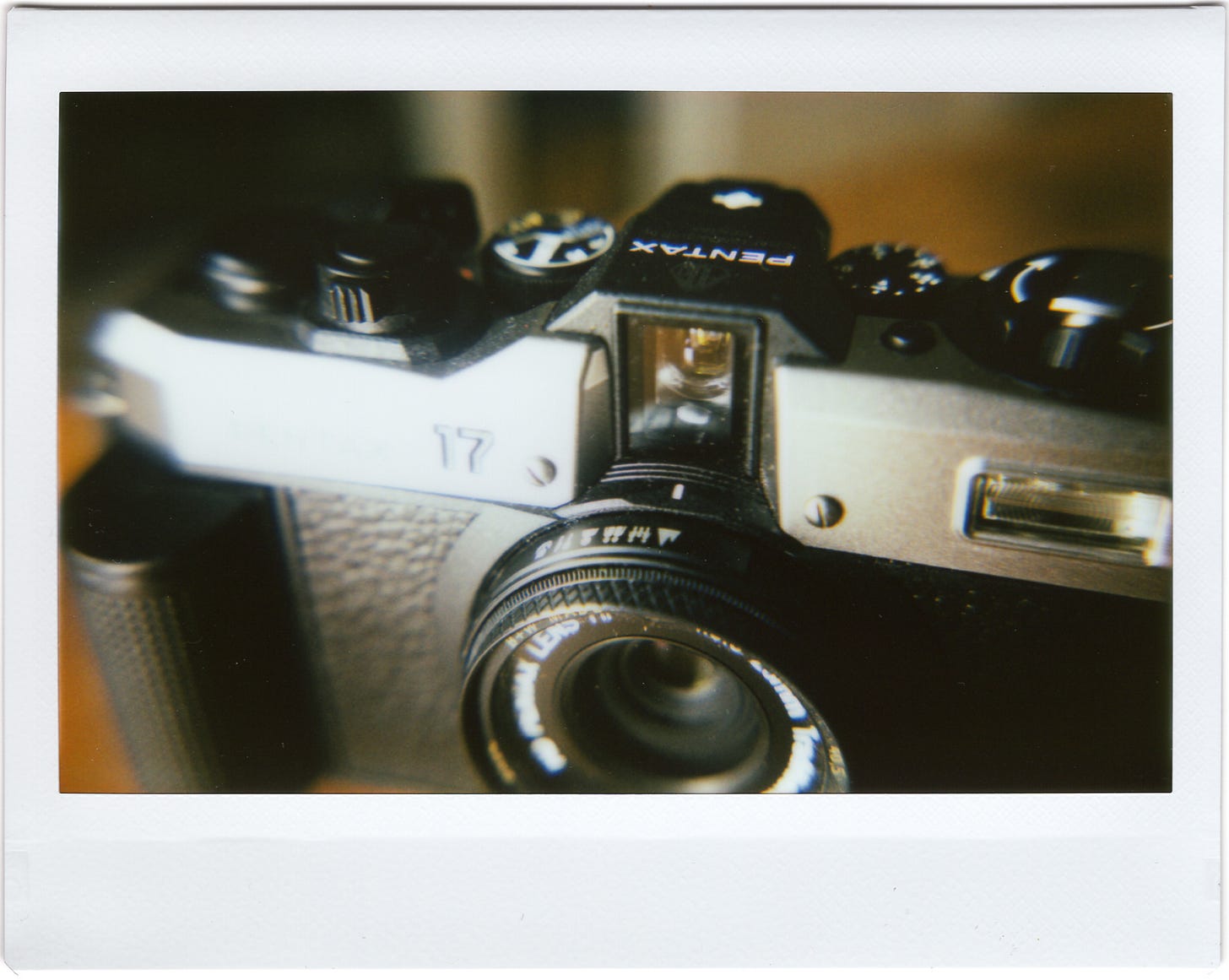
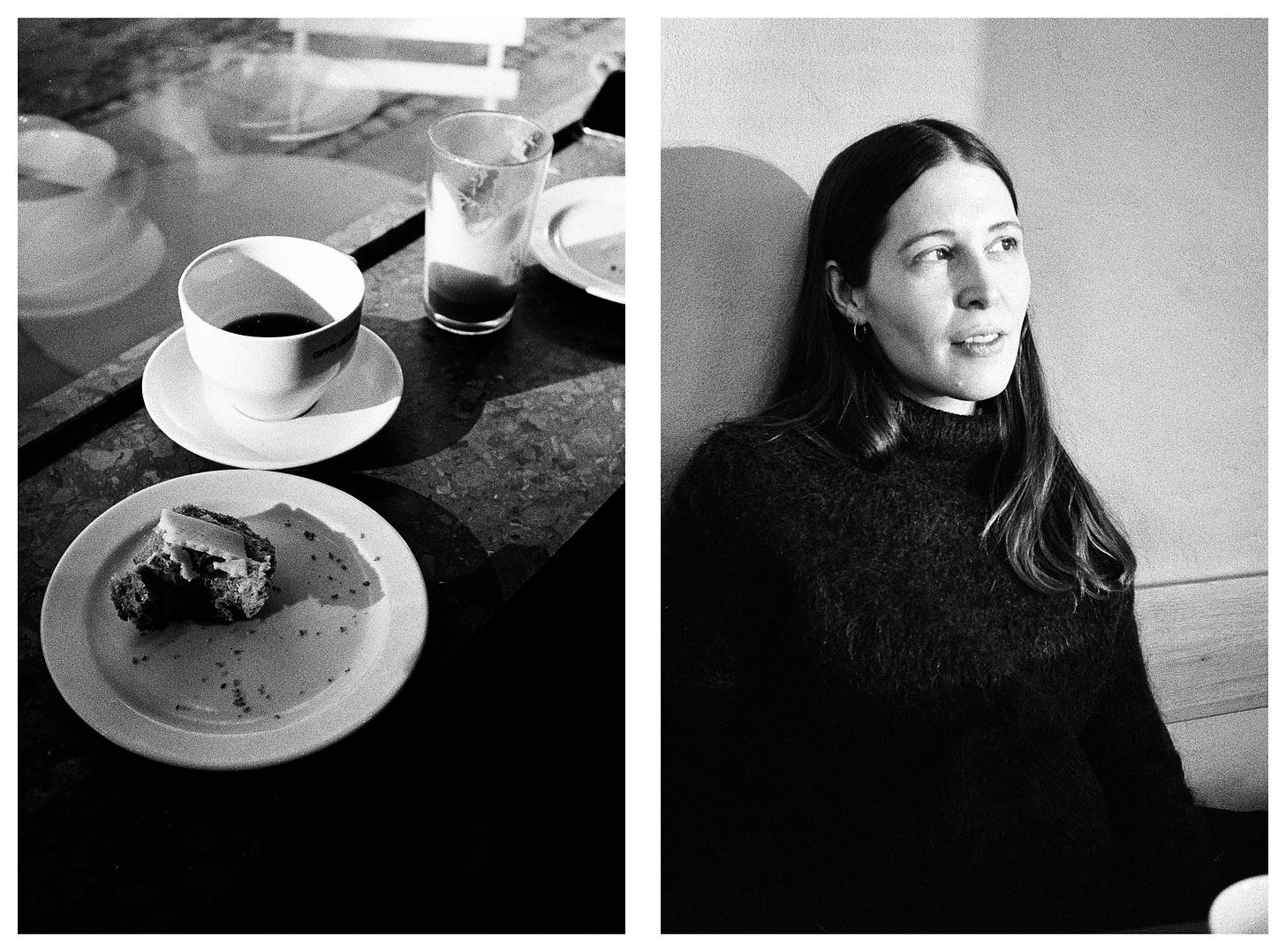
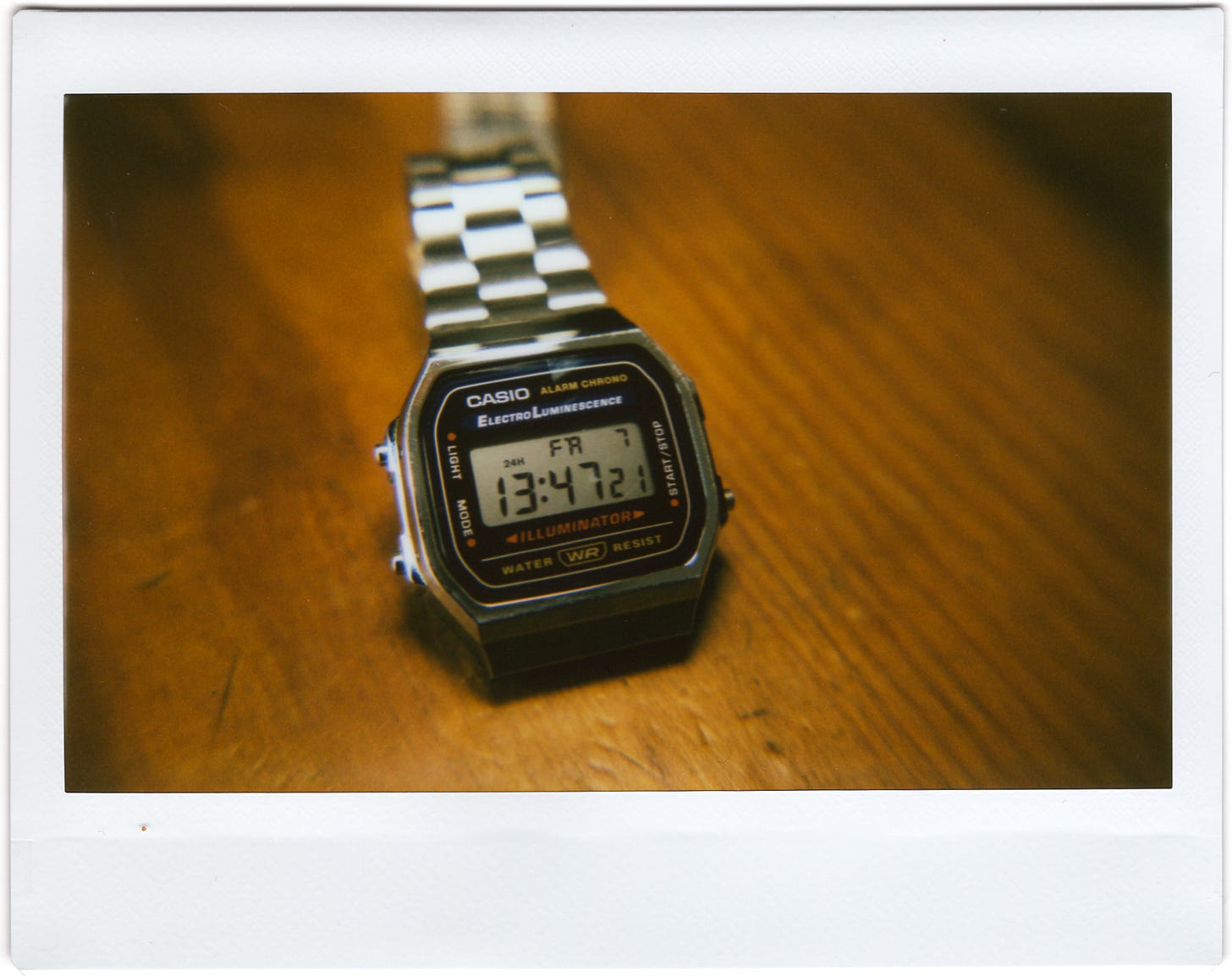
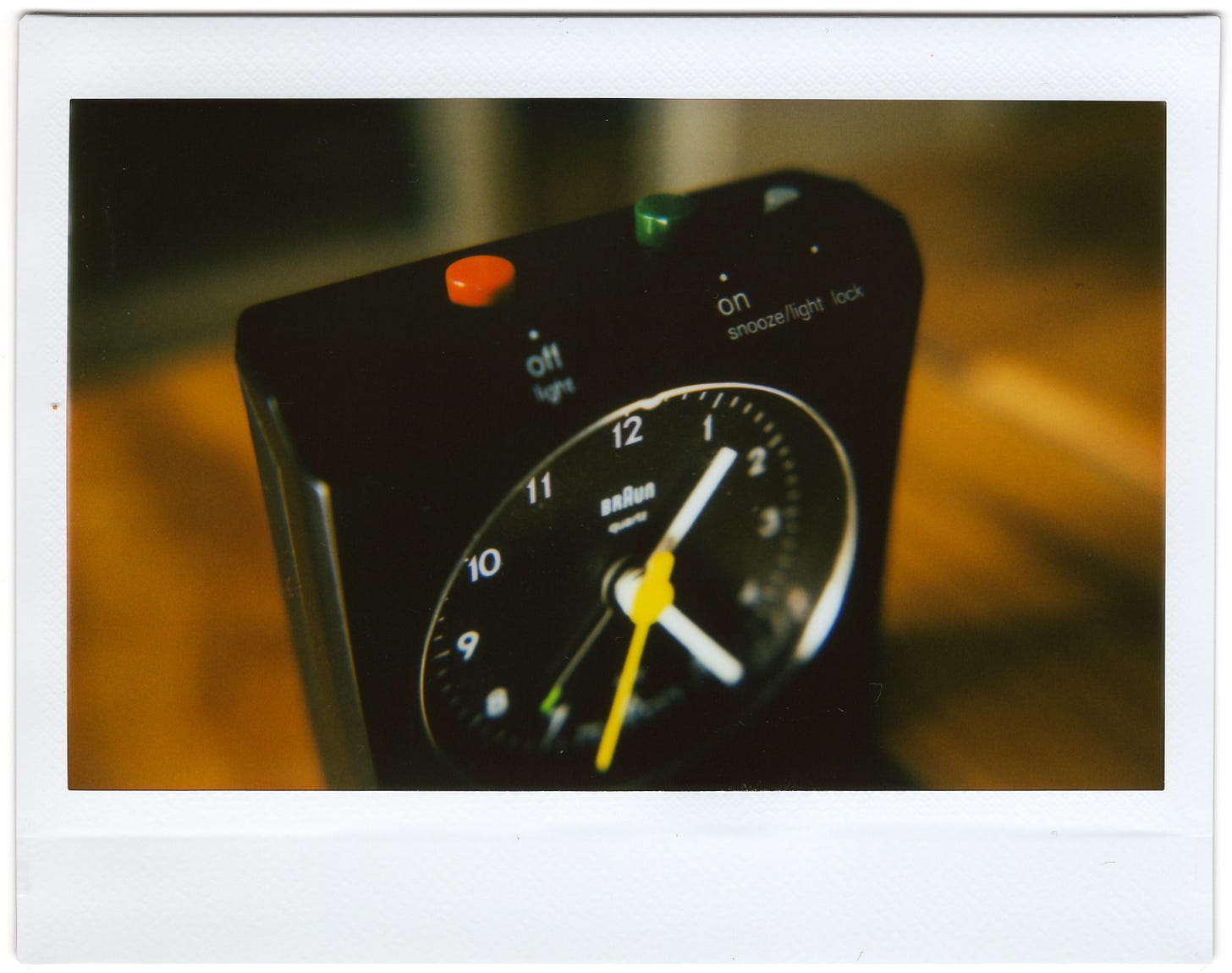
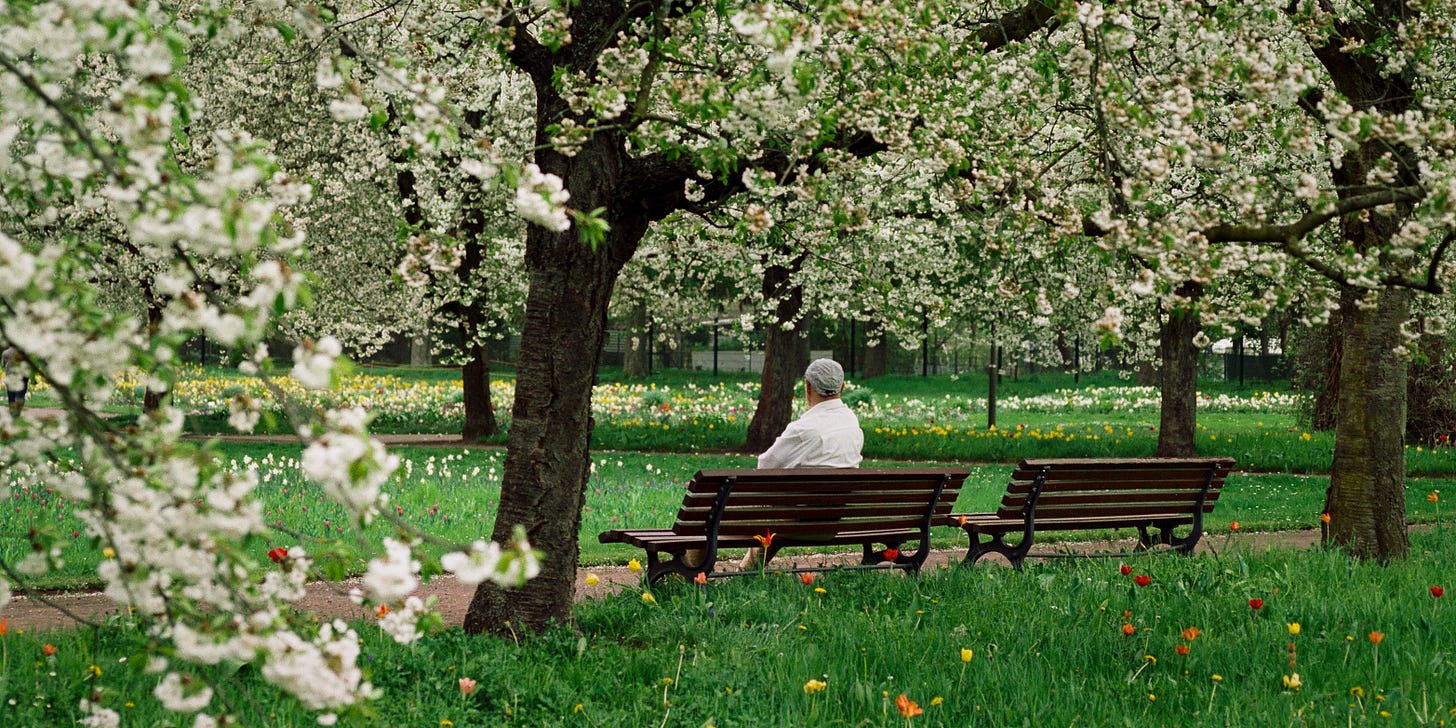


I've had the same bedside clock for 7 years now. A different model though, since it doesn't have the cute red and green buttons like yours. What a great find!